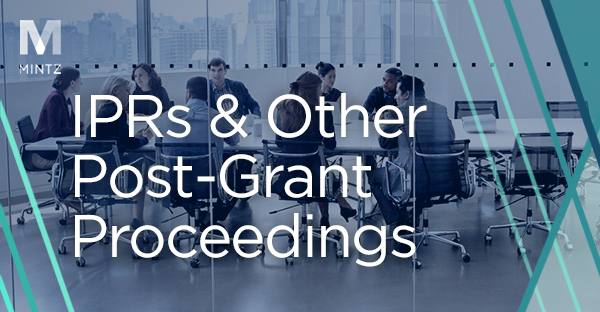Tip #6 for Avoiding IPR Institution: Advocate Claim Constructions the Petition Ignored
Arguing against material constructions proffered by an IPR petition is a basic building block of the patent owner’s preliminary response. Obviously, patent owners must investigate and advocate for claim constructions for these terms that avoid prior art, if possible. But the patent owner is not limited to construction issues raised by the petition. Indeed, critical strategy considerations come into play when the petition avoids constructions of critical claim elements. In these circumstances, the patent owner has an advantage, and can potentially advocate, unchallenged, for the proper claim constructions without raising pre-institution factual questions.
Petitions are required to address any claim terms that require construction. (37 CFR § 42.104(b)(2) “The statement must identify… [h]ow the challenged claim is to be construed.”) Petitioners will sometimes hand wave past this requirement, and assert that all claim terms in the challenged claims should be construed pursuant to their plain and ordinary meaning without providing the PTAB with those plain and ordinary meanings. Or the petitioner will construe some limitations, while avoiding construction of other ones. This approach affords the petitioner wiggle room in applying the prior art to the challenged claims—by not locking itself into a particular construction and application of that construction pre-institution, the petitioner has the flexibility to discreetly shift positions after the patent owner’s response and account for any unanticipated validity arguments, effectively using the “plain and ordinary meaning” as a fungible concept. To avoid these situations, patent owners should consider proactively addressing any important claim construction questions that the petitioner avoided.
Some examples are illustrative. In ASM IP Holding B.V. v. Kokusai Semiconductor Equipment Corp., IPR2018-01582, Paper 11 (P.T.A.B. Feb. 25, 2019), petitioner ASM offered no specific construction for any term other than that each term should be construed by its plain and ordinary meaning. Patent owner Kokusai, on the other hand, offered several constructions. Id. at 7. The PTAB found that construction of only one element resolved the petition, construed the term in favor of the patent owner, and found that because petitioner, despite a pre-institution reply to address the limitation, “improperly mapped” the prior art to the challenged claim, the petition failed to “specify where each element of the claim is found in the prior art patents or printed publications relied upon.” Id. at 8-9, 18-19. Then, putting a pin in it, the PTAB regardless found that the prior art did not disclose this element using the correct construction, and denied institution. Id. at 19.
Similarly, in Toyota Motor Corporation v. GE Hybrid Technologies, LLC, IPR2019-00009, Paper 7 (P.T.A.B. May 3, 2019), petitioner Toyota asserted several constructions in the petition, but did not construe several other limitations. In its preliminary response, the patent owner did construe certain terms the petitioner ignored. Having only the benefit of patent owner’s constructions for these terms (because petitioner Toyota did not address them), the PTAB adopted patent owner’s constructions and found that the prior art did not disclose the elements as properly construed.
As all patent practitioners know, claim construction is a critical stage in any patent dispute, and often dispositive. Patent Owners already facing long odds should not pass on offering up the correct construction to the Board, particularly where a claim term has implications for not only validity at the PTAB, but infringement in district court.
******
Avoiding IPR institution presents a challenge to even seasoned patent owners who are well versed in resolving patent disputes. When presented with validity challenges at the PTAB to your core intellectual property assets, finding the right counsel to advocate for validity can be the difference between a successful PTAB experience and a failure of your entire enforcement campaign.
The Mintz IP team hopes that these practical tips to avoid institution are helpful, and we are happy to discuss any way to assist in your patent needs.
Thank you for reading this final post in our series on Avoiding IPR Institution. To read the full series, click here.
* The content of this post does not constitute legal advice and we recommend you discuss options with your attorney prior to making legal decisions.

Tip #5 for Avoiding IPR Institution: Policing KSR’s motivation requirement for the ‘how’ and ‘why’.
November 12, 2020| Blog|

Tip #4 for Avoiding IPR Institution: Don’t Argue Facts
November 9, 2020| Blog|

Tip #3 for Avoiding IPR Institution: Use Disclaimers Strategically
November 5, 2020| Blog|
Authors


